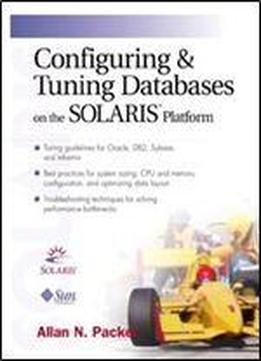
Configuring And Tuning Databases On The Solaris Platform
Tags:
Allan N. Packer
Turbocharge your Oracle, DB2, Sybase, or Informix database environment! Covers every aspect of database and Solaris Operating Environment tuning Optimize data layout, CPU and memory configuration, and system sizing Identify and resolve bottlenecks, step-by-step Understand industry-leading benchmarks Maximize the performance of any enterprise database running on the Solaris Operating Environment! Using this book, database professionals can optimize the performance and cost-effectiveness of virtually any database application running on the Solaris platform. Database specialist Allan Packer presents start-to-finish guidance for optimizing all four leading Solaris platform databases: Oracle (including Oracle9i), DB2, Sybase, and Informix XPS. Drawing on years of expertise as an engineer at Sun, Packer brings together best-practice guidelines for every aspect of Sun database server tuning. Optimizing data layout, CPU and memory configuration, and system sizing Identifying and resolving bottlenecks: a systematic, drill-down monitoring approach Understanding database optimizers, database buffer cache, and other key subsystems Demystifying the industry''s leading benchmarks-and recognizing their limitations Understanding the impact of Java technology on database application design Contains a quick primer on database architecture and conceptUsing this book, database professionals can dramatically improve the performance and cost-effectiveness of virtually any database application running on the Solaris(R) platform. Solaris database optimization specialist Allan Packer presents start-to-finish guidance on optimizing all four leading Solaris databases: Oracle, DB2, Sybase, and Informix. Configuring and Tuning Databases on the Solaris Platform brings together best-practice guidelines for every aspect of database tuning on Sun servers. Drawing on years of expertise as a Sun consultant, Packer presents detailed recommendations for data layout, CPU and memory configuration, and system sizing. He introduces a systematic, drill-down monitoring approach designed to help database professionals identify and resolve system bottlenecks that inhibit database performance. Packer demystifies database tuning by providing a quick primer that explains database architecture, key database concepts, and how to use key subsystems such as query optimizers and buffer cache. He describes and critiques each leading database benchmark, offering guidance for using benchmarks and not misusing them.








